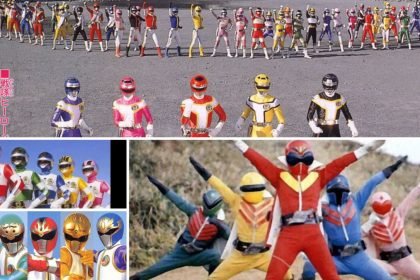Manga, the Japanese art form of storytelling through sequential art, has captivated readers worldwide with its diverse genres, compelling narratives, and unique visual styles. Behind the scenes, publishing companies play a pivotal role in nurturing and promoting manga, ensuring its availability to a wide audience. In this article, we will delve into the crucial relationship between manga and publishing companies, exploring the rise of manga culture, the publishing process, marketing strategies, collaboration opportunities, financial support, and the future of manga publishing.
Manga has evolved from its humble beginnings to become a global phenomenon. Originating in Japan, manga has transcended borders, capturing the imagination of readers across different cultures and age groups. It has become an integral part of popular culture, influencing various forms of media such as anime, films, and video games. The success of manga can be attributed to its ability to tell diverse and engaging stories, ranging from action-packed adventures to heartfelt romances and thought-provoking dramas. The visual storytelling in manga, accompanied by intricate artwork and dynamic panel layouts, creates an immersive reading experience. As a result, manga has garnered a dedicated fan base worldwide.
Publishing Company and Manga Industry
Publishing companies play a fundamental role in the manga industry, acting as the bridge between mangaka (manga creators) and readers. These companies serve as the catalyst for discovering new talent, providing editorial support, and nurturing the creative process. When mangaka submit their manuscripts to publishing companies, the selection process begins. Editors carefully evaluate the submissions, looking for compelling stories, unique art styles, and market potential. Once selected, the manuscripts undergo a collaborative process of editing, localization, and translation to prepare them for publication. Design and production teams work diligently to create visually appealing physical volumes that showcase the artwork in its full glory.
Marketing and distribution are essential aspects of manga publishing. Publishing companies employ various strategies to promote their manga titles, including advertising campaigns, social media engagement, and collaborations with influencers. They leverage different channels to reach the target audience, such as bookstores, online retailers, and subscription services. With the advent of digital platforms, manga consumption has expanded significantly. Publishing companies have embraced digital distribution, making manga accessible through e-books, webtoons, and dedicated manga reading apps. These digital platforms provide convenience and instant access to a vast library of manga, contributing to the growth and reach of the medium.
Key Factor of Collaboration Between Publishing Company and Manga Industry
Collaboration between mangaka and publishing companies is a key factor in the success of manga. Editors work closely with mangaka to provide guidance, feedback, and support throughout the creative process. This collaboration fosters the development of unique storytelling techniques, compelling characters, and visually striking artwork. Additionally, publishing companies play a vital role in licensing manga for international distribution. Through licensing agreements, manga titles are translated and localized for readers around the world, fostering cultural exchange and introducing diverse narratives to new audiences.
Financial support is another crucial aspect of the relationship between manga and publishing companies. Publishing companies provide financial backing to mangaka, allowing them to focus on their craft without the burden of financial constraints. This support enables mangaka to dedicate their time and energy to creating captivating stories and artwork. Furthermore, publishing companies play a pivotal role in protecting the intellectual property rights of mangaka, ensuring that their creations are respected and legally safeguarded.
While the manga industry continues to thrive, it also faces challenges and opportunities in the digital age. The rise of online piracy poses a significant threat to the industry, impacting the revenue of both publishing companies and mangaka. However, it also presents opportunities for innovation and adaptation. Publishing companies are exploring new business models, such as subscription-based services and digital-first releases, to cater to changing reader preferences. Technological advancements, such as augmented reality and virtual reality, have the potential to revolutionize the manga reading experience. These advancements can enhance the visual storytelling and immerse readers in the manga’s world like never before.
Looking ahead, the future of manga publishing is bright. The industry is poised for continued growth, fueled by technological advancements, expanding global markets, and the passion of manga enthusiasts. Manga has become a powerful medium for cultural exchange, bridging gaps and fostering understanding between different cultures. As the companies continue to champion new talent, support mangaka, and adapt to evolving reader demands, the manga landscape will flourish, delighting readers with captivating stories and captivating artwork for years to come.
Conclusion
In conclusion, manga and publishing companies form an indispensable combination in the world of sequential art. Publishing companies play a vital role in nurturing, promoting, and distributing manga, enabling mangaka to share their stories with a global audience. Through collaboration, financial support, marketing strategies, and technological innovations, publishing companies contribute to the success and growth of the manga industry. As manga continues to captivate readers and transcend cultural boundaries, the symbiotic relationship between manga and publishing companies remains as important as ever. So, whether you’re a devoted manga fan or a curious reader looking to explore new narratives, dive into the vibrant world of manga and experience the magic brought to life by the collaboration between mangaka and the companies.













